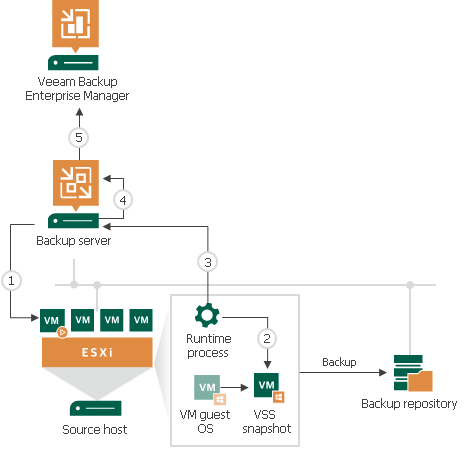 This is an archive version of the document. To get the most up-to-date information, see the current version.
This is an archive version of the document. To get the most up-to-date information, see the current version.How VM Guest OS Indexing Works
In this article
When you run a backup job with the file indexing option enabled, Veeam Backup & Replication performs the following operations:
- When the backup job starts, Veeam Backup & Replication connects to the VM whose file system must be indexed and deploys a runtime process inside this VM. The runtime process is responsible for coordinating indexing activities inside the VM.
- The runtime process starts indexing the VM file system. The indexing procedure is carried out in parallel with the backup procedure. If indexing takes long, Veeam Backup & Replication will not wait for the indexing procedure to complete. It will start copying VM data and continue file indexing inside the VM. If you have enabled application-aware processing for the VM, Veeam Backup & Replication performs indexing using the VSS snapshot, not the VM guest OS itself. As a result, the created file index exactly reflects the state of the backed up VM.
- When file indexing is complete, the runtime process collects indexing data and writes it to the GuestIndexData.zip file. The GuestIndexData.zip file is stored to a temporary folder on the backup server.
- When the backup job completes, Veeam Backup & Replication notifies the local Veeam Guest Catalog Service, and the service saves indexing data in the Veeam Catalog folder on the backup server.
- During the next catalog replication session, the global Veeam Guest Catalog Service replicates data from the backup server to the Veeam Catalog folder on the Veeam Backup Enterprise Manager server.
